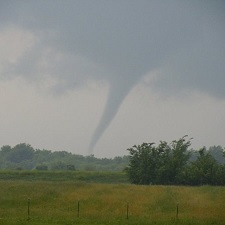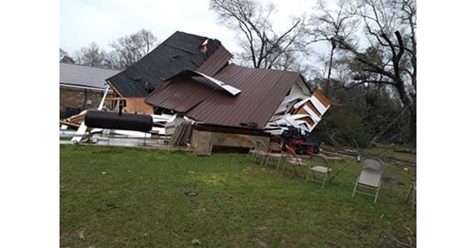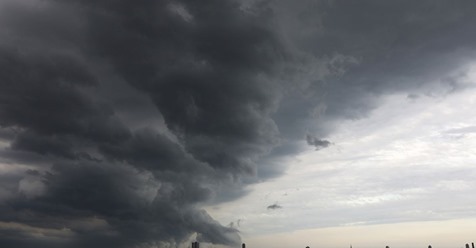WEST LAFAYETTE — Tornado season, generally spanning from March to June, is upon us. There were more than 130 reports of tornadoes across the country during the last two weeks of May, and earlier this year, 23 people were killed in a cluster of tornadoes near the border of Georgia and Alabama.
Although tornado deaths have been on the decline, thanks to advances in scientific understanding of the storms and better warning systems, there’s still a lot scientists don’t know.
2011 was an especially deadly year for tornadoes. After nearly 1,700 storms killed 553 Americans in a single season, Congress decided to fund research efforts to help scientists better understand them. VORTEX Southeast, a project to study how environmental characteristics of the southeastern U.S. affect the formation, intensity, structure and path of tornadoes in the region, is one such effort.
Tornado Alley, which traditionally spans from Nebraska to Texas, is widely recognized as being the epicenter of tornado activity in the U.S. However, recent studies show it could be shifting.
A 2016 study published in the Journal of Applied Meteorology and Climatology shows that from 1954 to 1983, the center of tornado activity was between southeastern Oklahoma and northeastern Texas. By 2013, it had shifted to northern Alabama.
Deaths from tornadoes in the southeastern U.S. are disproportionately common compared to elsewhere in the country. Researchers believe this might be due to storms happening before the peak of tornado season, when they typically move more quickly. Other explanations could include bad storm visibility, inadequate shelter and higher population density in southern states.
During the spring of 2016 and 2017, Purdue researchers chased storms in northern Alabama as part of the VORTEX Southeast project. In collaboration with researchers from the University of Massachusetts and the University of Oklahoma, they used mobile radars to sample storms that passed within 60 kilometers (about 37 miles) of their site. They also used instrumented probes with laser disdrometers to measure rain drop size distributions, wind, pressure, temperature and humidity.
There are several questions about tornadoes in the Southeast the researchers want to answer. How do the environmental conditions that allow tornadoes to form in the Southeast compare to those in the traditional tornado alley? How are storms that produce tornadoes affected by terrain, especially that of the Appalachian Mountains? How can forecasting and warnings be improved?
“Most tornadoes, especially strong ones, are produced by a type of thunderstorm known as a ‘supercell,’” said Dan Dawson, an assistant professor of earth, atmospheric and planetary sciences at Purdue. “Some evidence suggests that tornadoes in the Southeast, while also often occurring in supercells, are produced more often than elsewhere from non-supercell storms. We hope to learn more about the nature of the formation processes for these tornadoes and how they differ from their supercell counterparts.”
After collecting data for two seasons, the Purdue team, comprised of Dawson, Ernest Agee, Michael Baldwin, Dan Chavas and Robin Tanamachi, is reviewing its research and starting to uncover some answers.
The study looked at how terrain variability, such as hills, affects tornadoes in Arkansas. Arkansas is a good place to try to answer such a question because of its wide range smaller scale topographical features. Researchers found tornadoes are impeded by hills.
Chavas, who led the study, said, “We found that this phenomenon is occurring on a really small scale, so the tornado is being directly affected by the terrain.”
The group has several papers in preparation and under review. Funding for VORTEX-SE is provided by the NOAA National Severe Storms Laboratory.
by Staff Reports (2019, June 12) Greenfield Reporter




